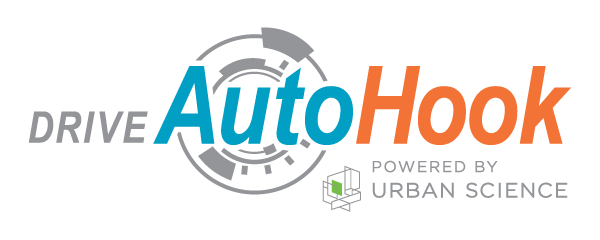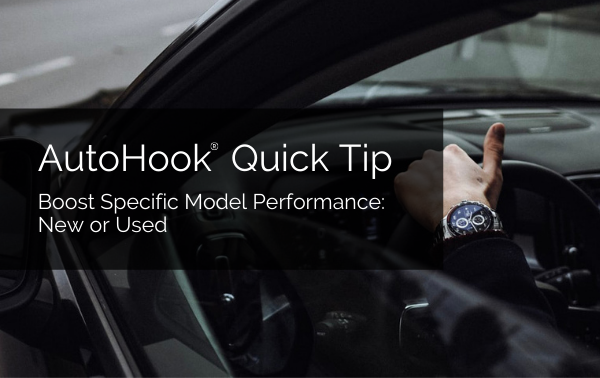by David Metter
MYTH #1: VDP views are the metric that matters most.
Since when did VDP views become more important than sales? This is not an attempt to downplay the importance of driving traffic to your VDPs. Reputable evidence exists around VDPs being one of the last digital destinations car shoppers touch before visiting a showroom. But are vehicle details page views receiving significantly more attention than they deserve? Are dealers working backwards? Are we losing sight of our one true goal…to sell more cars?
There’s no argument that with everything our industry is capable of measuring, it all comes down to physical transactions between customers and dealers, specifically units sold and closed service ROs. That’s what you measure before anything else. That’s the reason “big data” exists in the first place – to help you generate more sales and service revenue. Dealers have more data at their fingertips than they realize, and it’s easy to get caught up trying to navigate and make sense of it all. Goals become blurred and dealers lose sight of the end game.
Allow me to remind you of the end game. When it comes to dealership operations, NOTHING is more important than increasing sales, service revenue, and customer retention – and I’m happy to take on anyone who’d like to challenge that statement.
I think our industry has completely overcomplicated the idea of big data. The role it plays is actually quite simple. When you break it down, VDP views are #5 on the “what to measure” list. Below is the infrastructure of the order in which you achieve your end game of more sales, closed service ROs, and repeat buyers.
1. Sales Data: Securing accurate and timely sales match data is paramount. There is nothing more important. Leverage sales match data to see if a customer bought from you or somewhere else? What make and model did they choose? Was it your brand or a competitor’s brand? Monitor your pump in and pump out percent to hold onto sales in your PMA.
2. Service Data: Measure your closed service repair orders – especially during the critical period from after a sale to the first recommended service appointment. This is where most dealers experience the biggest drop off in retention. Did the customer come to your store for their vehicle’s initial scheduled maintenance or to a competitor? Did they order replacement parts from you or somewhere else? How many people made a service appointment on your website? How many of those people actually showed up? What sales opportunities exist among your service customers?
3. Showroom & Service Traffic: Next quantify, how many people physically came into your store or entered your service lane? The majority of people don’t have time to browse around multiple dealerships or visit your service center just for a quote. If they came to you, it’s for a reason. So make sure your staff is in the business of closing deals and ROs.
4. Leads, Phone Calls, & Chats: When potential customers complete an action on your website, whether it’s submitting a lead form or picking up the phone to call you, that opens the door to potential sales. Metrics on your lead, call, and chat volumes are important to analyze, but it’s much more about quality than quantity. Instead of focusing your budget on more leads, calls and chats, focus on the actions that drive showroom visits.
5. VDP Traffic: VDP views drive awareness, familiarity, and consideration. Although they can influence a customer to take further action, they do not directly result in sales.
MYTH #2: VDP traffic is the foundation for future sales.
In what world does a VDP view hold more value than an actual human-to-human interaction? VDP views are not the foundation. Showroom traffic is. Correct me if I’m wrong, but last time I checked, getting people in the door and speaking to them face-to-face is the best way to get them in a vehicle so they can touch, see, feel, drive and experience it for themselves. Show rates are infinitely more impactful than any ad or page view could ever be. Our industry has become so brainwashed, people believe more time, energy, and money should be allocated to driving VDP views rather than using those resources to drive showroom traffic. It’s absolutely mind-boggling.
MYTH #3: Big data is very complex and requires experts to turn it into action.
Wrong. All too often, dealers allow outside vendors to come in and tell them what they should be measuring. Social marketers will tell you social metrics are most important. Paid search companies will tell you clicks and website traffic are the secret to more sales. Our industry is stuck in this maze of listening to incessant digital noise. But every dealership is different, and there is no one size fits all solution.
My friends, it’s time to remove yourself from the maze and turn the volume of the noise ALLLL the way down so that you can actually hear the music.
You and your staff are the ONLY people that should dictate what you need to measure. Take the data you already have and zero in on the metrics that involve sales, service ROs, and repeat customers. Data is simply a catalyst for determining and reaching your goals. Sales data shows you where you stand against competitors, but more importantly, how you stand against yourself historically. Sales data will tell you exactly where you are, and exactly where you need to go.















































